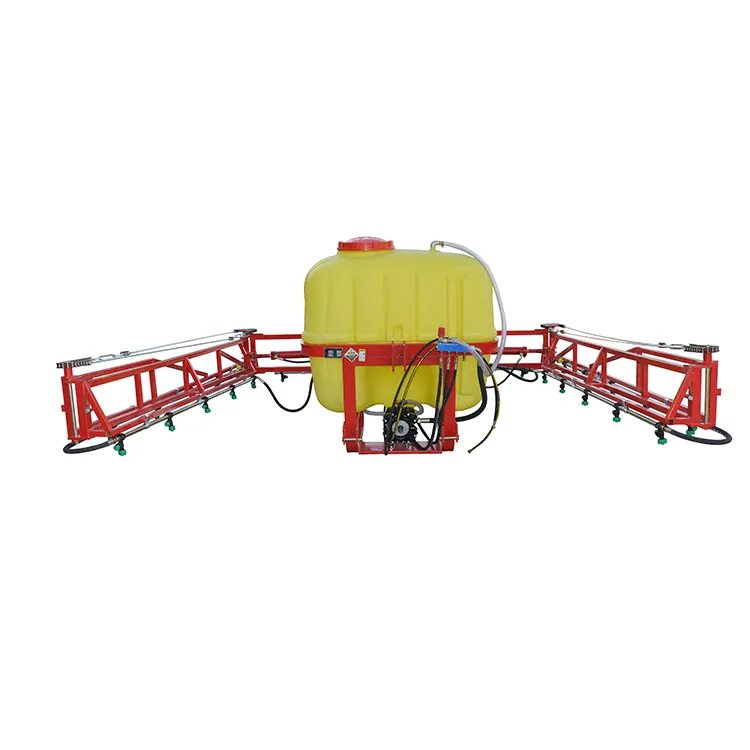How Agricultural Boom Sprayers Improve Crop Efficiency and Reduce Waste
2024-11-12
In modern agriculture, precision is key to maximizing yields and minimizing resource waste. Agricultural boom sprayers play a vital role in achieving these goals by allowing farmers to apply fertilizers, pesticides, and herbicides evenly across large fields. This blog will delve into how boom sprayers work, their benefits, and how they contribute to sustainable farming practices.
Key Points to Cover:
1. What Are Agricultural Boom Sprayers?
- Define agricultural boom sprayers and describe how they differ from other sprayer types (such as handheld or backpack sprayers). Highlight that boom sprayers consist of a long, horizontal spray boom with multiple nozzles attached, allowing for efficient and uniform coverage over large areas.
2. How Boom Sprayers Improve Application Efficiency
- Even Distribution of Chemicals: Explain how the design of boom sprayers, with nozzles spaced at specific intervals, ensures consistent and precise application, helping farmers avoid over-application and under-application of chemicals.
- Adjustable Boom Width: Describe how adjustable boom width allows farmers to customize coverage area based on field size and crop density, making boom sprayers versatile for various types of farming.
3. Advantages of Using Boom Sprayers in Agriculture
- Reduced Chemical Waste: Discuss how precise application helps conserve resources and reduce chemical waste, saving farmers money while minimizing environmental impact.
- Increased Productivity: Emphasize that boom sprayers allow farmers to cover large areas in a shorter time, leading to higher efficiency, reduced labor costs, and quicker field turnover.
- Better Crop Protection: Precise application minimizes the risk of crop damage from excessive chemical exposure, leading to healthier crops and improved yields.
4. Types of Boom Sprayers and Their Applications
- Mounted Boom Sprayers: Describe how these are typically mounted on tractors and are ideal for large-scale farming due to their high-capacity tanks and extended booms.
- Self-Propelled Boom Sprayers: Explain the benefits of self-propelled models, which are highly maneuverable, have larger tanks, and can work independently without the need for additional machinery.
- Tractor-Mounted vs. ATV-Mounted Sprayers: Discuss options for different farm sizes, with tractor-mounted sprayers suited for larger farms and ATV-mounted models useful for smaller, more confined spaces.
5. How Boom Sprayers Support Sustainable Farming
- Reduced Runoff: Discuss how accurate chemical application minimizes excess chemicals that can lead to runoff, reducing the environmental impact on surrounding ecosystems.
- Lower Carbon Footprint: Explain that by reducing chemical usage and minimizing passes over the field, boom sprayers help decrease fuel consumption, contributing to a lower carbon footprint in farming operations.
6. Maintenance Tips for Long-Lasting Performance
- Cleaning the Spray Boom and Nozzles: Provide tips on cleaning the boom and nozzles to prevent clogging, which can lead to uneven application and downtime.
- Calibration and Inspection: Suggest regular calibration and inspection of nozzles and the boom mechanism to maintain precise application rates and extend the equipment's lifespan.
- Seasonal Maintenance: Advise on end-of-season care, including draining and flushing the system, to keep the sprayer in optimal condition for the next season.
Agricultural boom sprayers are a powerful tool in precision farming, helping farmers optimize resource use, protect crops, and promote sustainable practices. With the right boom sprayer, farmers can manage larger fields more efficiently, enhancing productivity and contributing to long-term farm sustainability.



